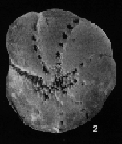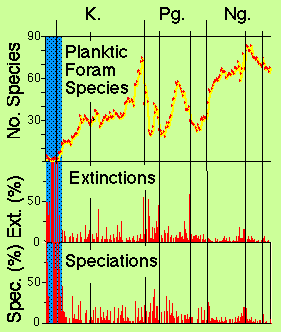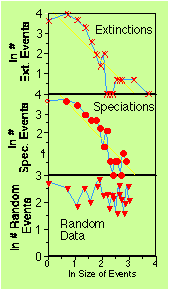
COMPLEXITY STUDIES IN PLANKTIC FORAMINIFERAL EVOLUTION
AT CARLETON UNIVERSITY
Evidence of self-organization in planktic foraminiferal evolution
Planktic foraminiferal evolutionary data was anlalyzed using
techniques of nonlinear dynamics by
R. Timothy Patterson of Carleton University and Anthony D. Fowler of the
University of Ottawa.
The data set comprised 196 extinction and speciation horizons from biostratigraphic
ranges of 662 reliably defined species. Extinction and speciation data sets
were both well characterized by power-law models.


Planktic foraminifers are floating single celled organisms. They are predominately
marine and are protozoans (i.e. single celled), belonging to the subclass
Sarcodina, order Foraminifera. They are characterized by a test of one to
many chambers composed of calcite or of aggluginated particles. They range
from the Cambrian to the present.
The analysis was interpreted to be consistent with planktic foraminiferal
evolution being organized,
as opposed to randomly driven. Their data supports a model whereby "the
internal organization of an ecosystem regulates the response to changes
in a deterministic manner, the relative scales of disturbances and extinctions
depending on the degree of interdependency within the system".
Graphs of their data showing number of species versus extinction and speciation
events, are shown below.


As can be seen in the graphs , power-law distributions are apparent in both
the extinction and speciation data sets, similar to the "real life"
extinction events studied in tthe Phanerozoic by Raup and the computer simulated
extinctions created by Ray. As well a very large set of data points, at
the species level, were used which lend credibility to the findings.
Final thoughts on complexity
Complexity index




